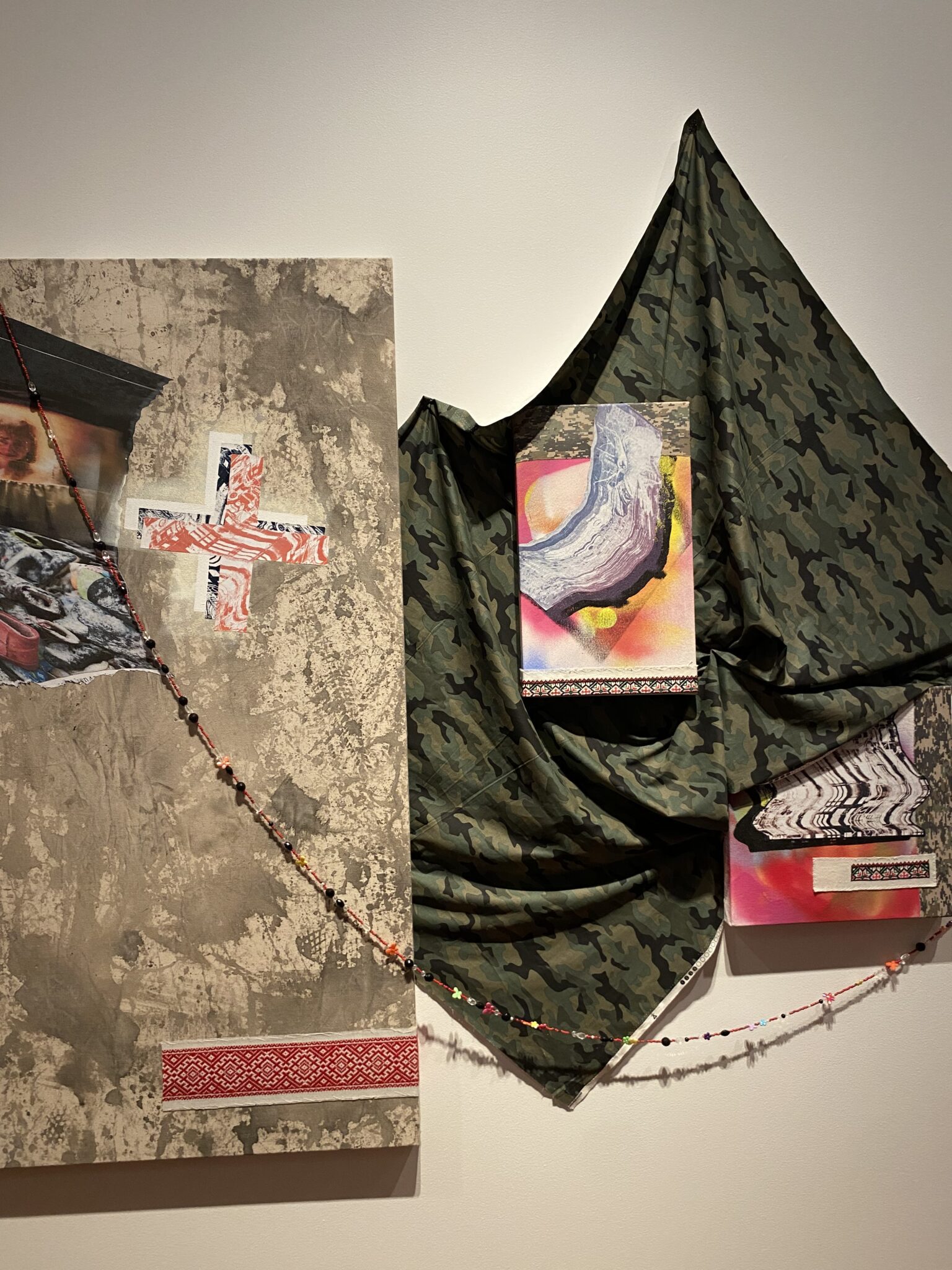Sydney College of the Arts’ (SCA) graduation show ‘New Contemporaries’ opened November 30 at the Old Teachers College (OTC). Comprising work from graduate students in Bachelor’s, Honours, and Master’s degrees in fine arts and film, the show is open everyday until December 9.
‘New Contemporaries’ is a collection, a collision, an occupation, and an invitation into the self and the meaning of education and artmaking. Student artworks from all disciplines occupy space in the formal gallery and throughout the labyrinth floor plan of the OTC. Art flows into the classrooms, studios, labs, and onto the walls, clearing out the furniture and paraphernalia of regular teaching spaces.
Remnants of the students’ material process remain littered around us as paint forms a skin on the floor and the marks burn into the walls. We are reminded that these works mark the end and often culmination of an arduous education.
‘New Contemporaries’ reveals a graduate cohort rife with ideas and talent. The exhibition contains everything from doodles (Aurora Kilbey), a Brutalist-style bed (Emily Greenwood), to a participatory meal (Kristen Rhodes-Hasler) and olfactory experiences (Evangeline McGowan Braithwaite).
Solomiya Sywak’s marked and adorned drop sheet, and handsewn materials, explores her diasporic experiences of her Ukrainian heritage. Lukas Skalos balances screens of shaky hand-recorded videos of local queer monuments and the Acropolis upon piles of books: academia, antiquity, and popular fiction. Isabella de La Rose interrogates Australian literary gender archetypes through repetitive and almost eerie animation and sculpture. Zhifei Wang weaves a cat’s story through spot-lit animation and screen printing and discovers herself in the process. Olivia North shares her high school diary entries in tapestry form. Maya Worsfold remembers her childhood with a sheet awake with mountains of light.
Within two simultaneous videos of warped Google Maps footage, is Cait Davies’ celebration of the natural landscape’s beauty, and call to hope. Isabella Nicolletti draws in historical and literary understandings of feminism in her reconstructed painter’s room. Letting sound, water and photography speak to each other, Olive Burgess centres place.
Elsewhere, Ali Noble creates padded velvet furniture to theatrically question the confines and conventions of motherhood. Molly Paradice renders the beauty of “fucking and sucking” in jewelry form. In whispery sheets, Ashley Cagauan understands nature.
The students’ processes are interdisciplinary, accidental, intentional, lovemaking, careful, and placemaking. Lines are strong, thick, fragile, cruel, and sad. Colours are vivid, rough, and kind. Works act as delicate stories from personal archives, collective experiences, or an exploration of big thoughts.
The exhibition experiments with mediums, practices, and confronts our concept of the ‘contemporary’. We encounter themes that reluctantly emerge in contemporary art: intimacy, memory, heritage, nostalgia.
These hundred or so works capture the realms of students’ development over their course as they build their practice. All works feel personal yet connected, reaching out beyond their bodies.
Each artwork is housed within the place they emerged into being. The building is a space for many faculties, students, and groups. Boundaries between curation and process fall away. We are reminded that the University hasn’t dedicated a specific building to the fine arts or film school—symbolic of the institution’s disregard for the arts. It’s ironic that such proponents attended the reception, when the exhibition underscores the value of fine arts education. The art world remains full of idiosyncrasies, an idea explored within the parodic ‘|A|’ art work.
Go see ‘New Contemporaries’. The culmination of these students’ education, their years of tears and happiness, flow and block, labour and rest cannot be contained to an article, but fully understood through witnessing firsthand. Soon these desks, easels and cameras will return to these spaces, new students will walk in, and the process will start again. Works from the exhibition can be viewed online here.





